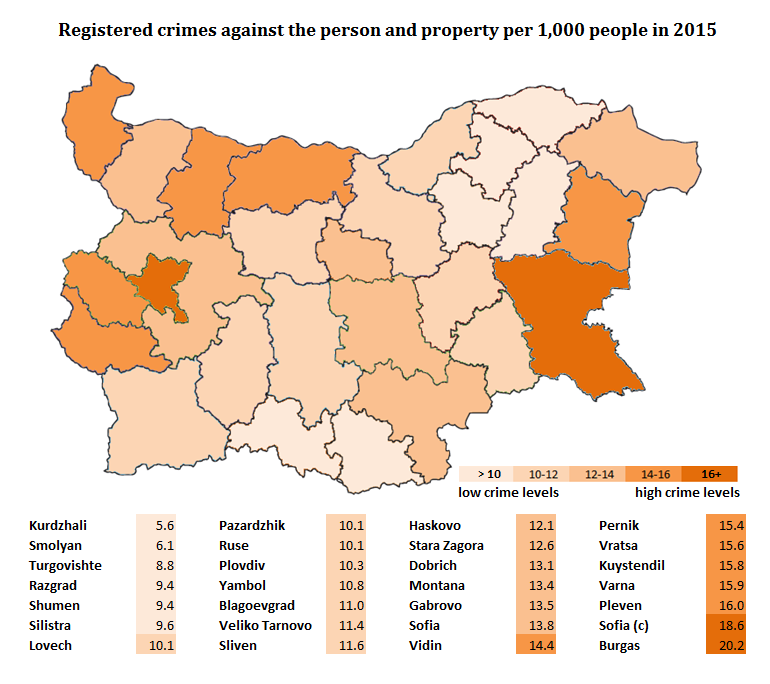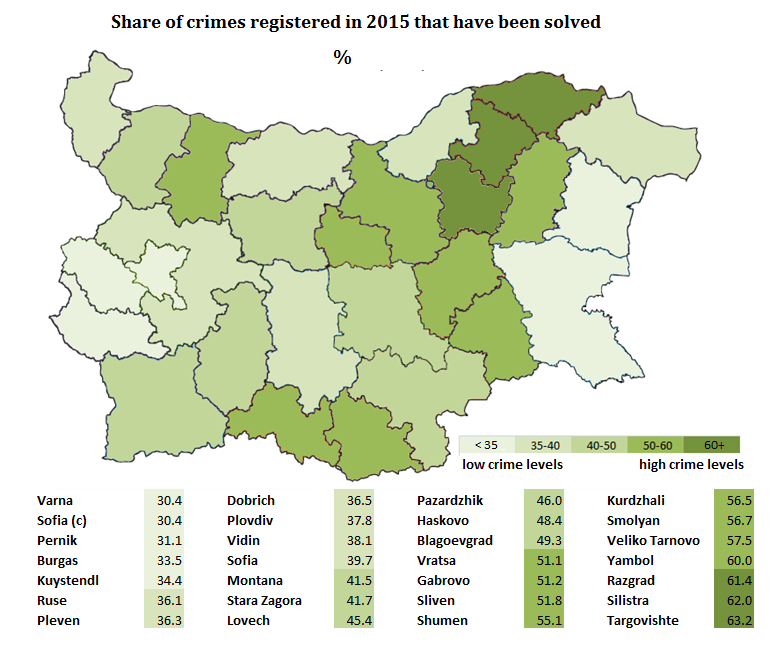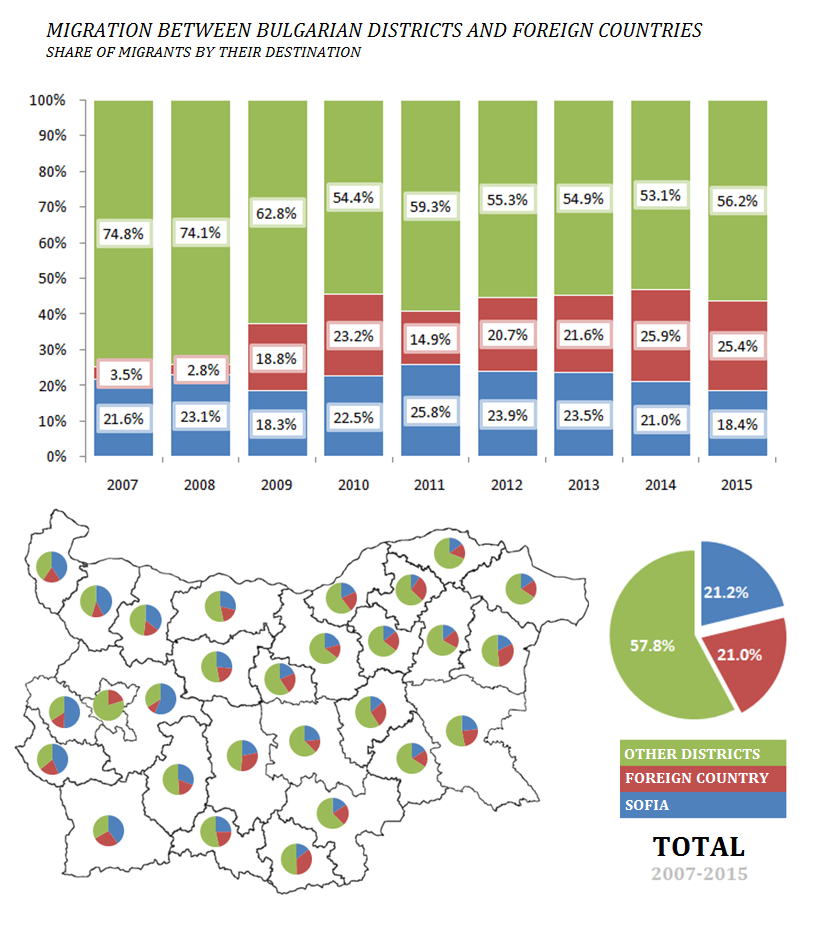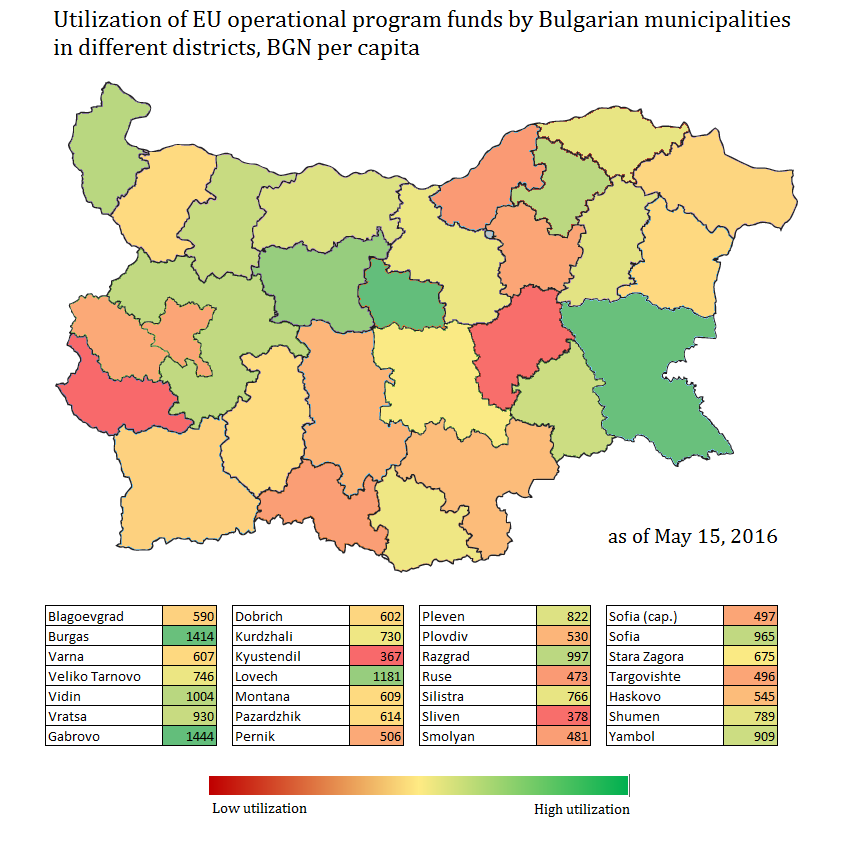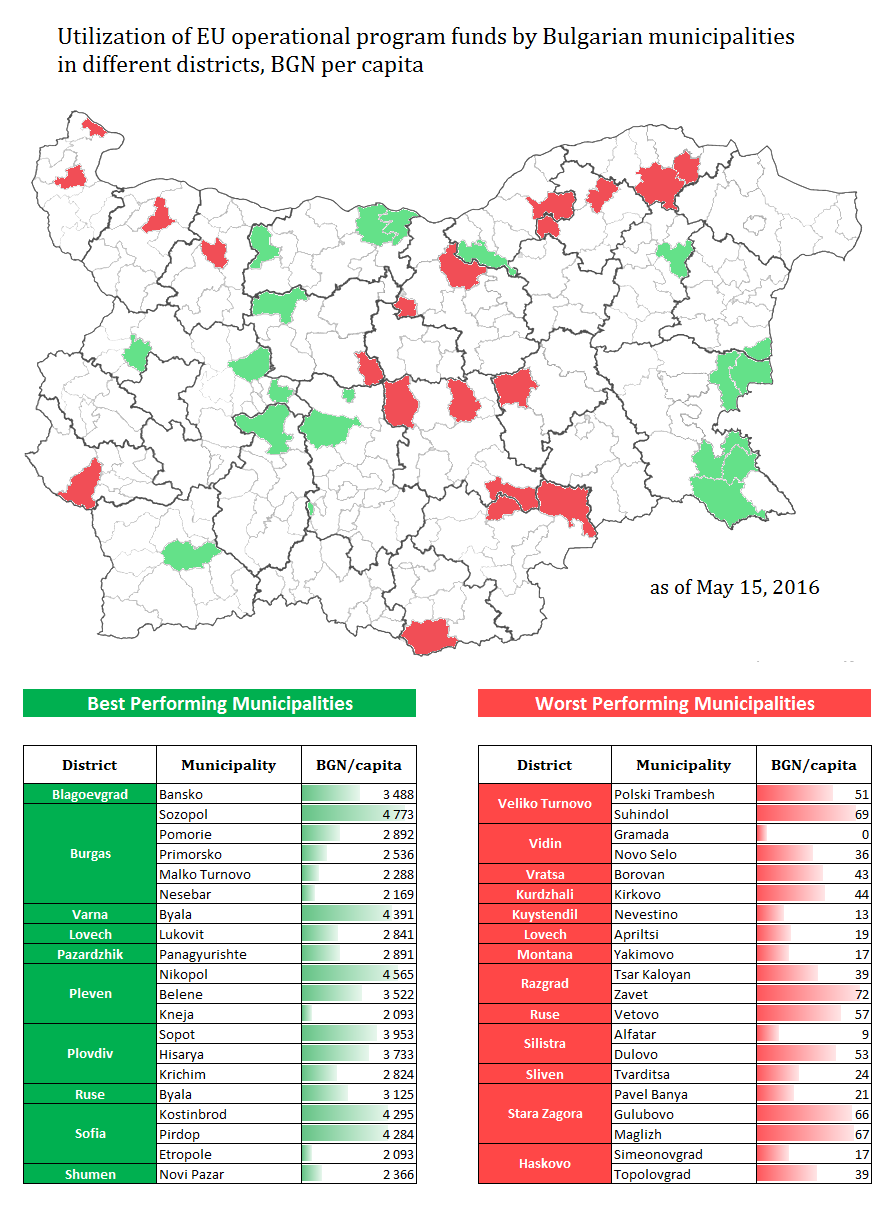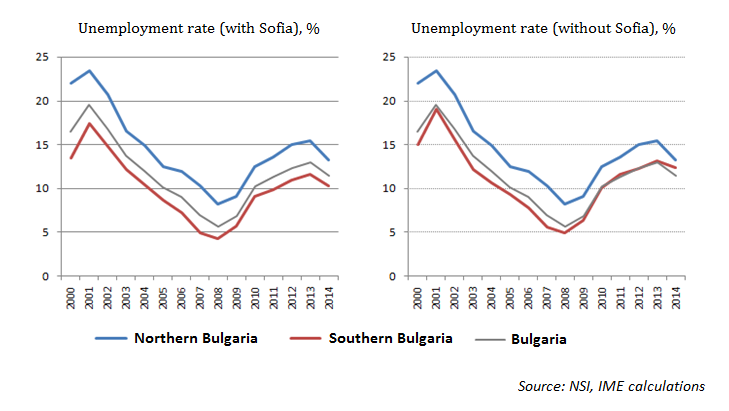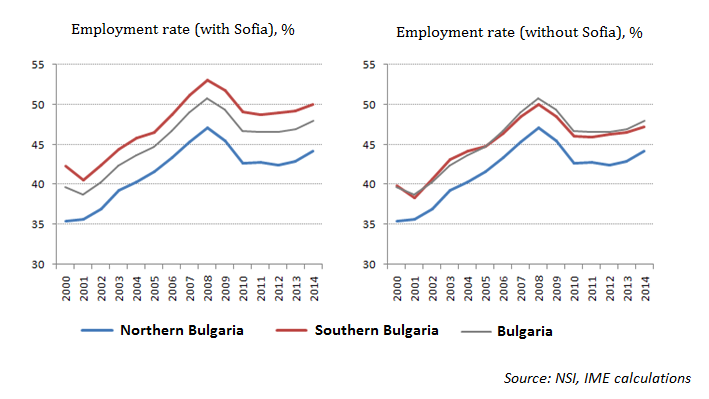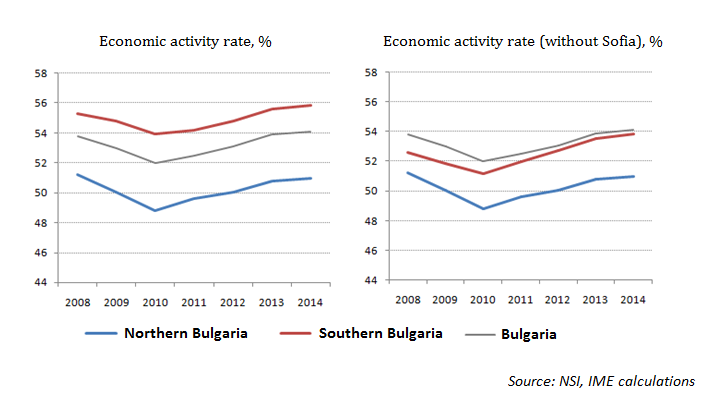The Discredited Decentralization
The political will for further fiscal decentralization seems to have vanished.
Yavor Aleksiev
Just a year after the topic of fiscal decentralization briefly entered the public debate, the political volition for taking actual steps in this direction seems exhausted. The government stifles to a large extent the initiative of local authorities in two steps:
- The successful transformation of the debate of last year’s fall into a debate about higher taxes. After delaying for years the discussion about transferring part of the proceeds from taxes on personal income to the municipalities, Finance Minister Vladislav Goranov made a move that largely discredited the idea of fiscal decentralization. The proposal to maintain the level of taxes on personal income at the national level and to give municipalities the power to additionally "burden" workers with up to 2 percentage points increase of this tax (on the eve of local elections) silenced the local authorities to a large extent on the topic, at least for the fiscal 2016 year, and probably for later on as well.
- The adoption of a mechanism for financial recovery of municipalities, which even though provides tools to promote higher collection and optimization of administrative costs for troubled municipalities, makes local finances even more dependent on the central government. Particularly worrying is the possibility of pardoning the accumulated interest-free loans of distressed municipalities from the central budget, in the case of satisfactory results in the recovery of the local finances – an obvious tool for favoritism towards certain mayors.
With the first step the government managed to make the concept of fiscal decentralization sound unappealing by linking it with a rise in taxes and with the second step it managed to change the subject completely by diverting the attention of municipalities from the lack of income sources towards their debt problems. In other words, while the supporters of fiscal decentralization were trying to give Bulgarian municipalities the image of a responsible and less dependent local authority, the mechanism for financial recovery managed to portray those same municipalities as fiscally irresponsible.
Despite these steps made by the MF (Ministry of Finance), the public remains enthusiastic towards fiscal decentralization, which is why we want to draw attention towards two recent reports published on the National Association of Municipalities in the Republic of Bulgaria (NAMRB): "Analysis of the implementation of municipal budgets for 2015" and "Indicators for the development of fiscal decentralization in South-East Europe: 2006-2014."
- There is practically no country in South-East Europe, where the debt of local authorities has not grown over the last decade. In general, this fact is explained by the need for higher capital costs and relatively smaller tax powers of local authorities compared to municipalities in Central and Western Europe.
- The increased indebtedness of Bulgarian municipalities (especially in 2015) is to a large extent a direct consequence of the lack of alternatives for co-financing investments for EU projects. It should be noted, also, that 2015 was the last year in which payments for European projects from the previous programming period (2007-2013) could be made.
- Revenues of local authorities in Bulgaria as a share of GDP fell from 7% in 2008 to 5.3% in 2015. At the same time this decrease occurred at a time of a gradually rising tax burden in the economy as a whole. As part of the consolidated budget the revenue for the same period fell from 19.6% to 14.4%.
- Lacking other opportunities to raise their own funds, Bulgarian municipalities have resorted for the most part to an increase in property taxes. The collection of these taxes, however, remains below 70% in 118 of the 265 municipalities in the country. In addition, these taxes are subject to a number of tax exemptions. Practically, all sudden increases in the revenue are observed in smaller municipalities and are due to one-time proceeds, grants or sales of property.
- The structure of the municipal revenue collection disallows the use of the budget as a policy-making tool, including debt management. Actually, the last things that depend on local spending policies in Bulgaria are decisions of municipal councils and preferences of local communities.
There exists a problem with municipal debt in Bulgaria, indeed. However, in the general case the debt is not created by arbitrariness and fiscal irresponsibility of the local authorities, but by structural problems of the tax policy. In order for a municipality to negotiate first, and then successfully repay the loan, it must manage the bulk of its revenues (i.e. its revenues have to play a significant role) and have more control over their spending. Unfortunately, except for a few major cities and resort communities, most municipalities in Bulgaria have a much lower share of disposable income and rely heavily on transfers from the central governent.
The differences in the capacities of municipalities to generate their own revenues are significant, which is a problem that will not resolve itself with remising a portion of the proceeds from taxes on personal income. However, some improving process should be initiated and the only action that is logical and technically feasible in the medium-term is namely linking the economic processes on the territory of a municipality with its budget.
 In 2015 the number of registered crimes continued falling and reached 98 thousand in comparison with 135 thousand back in 2000. Crime levels have also decreased in relative terms - from 16.6 per thousand people to 13.6 per thousand people for the 2000-2015 period. This trend was interrupted only during the first years of the crisis (2009 and 2010), during which the number of registered crimes was rising. One possible explanation for the surge in the beginning of the crisis is the quick increase in unemployment and the overall drop in per capita income.
In 2015 the number of registered crimes continued falling and reached 98 thousand in comparison with 135 thousand back in 2000. Crime levels have also decreased in relative terms - from 16.6 per thousand people to 13.6 per thousand people for the 2000-2015 period. This trend was interrupted only during the first years of the crisis (2009 and 2010), during which the number of registered crimes was rising. One possible explanation for the surge in the beginning of the crisis is the quick increase in unemployment and the overall drop in per capita income.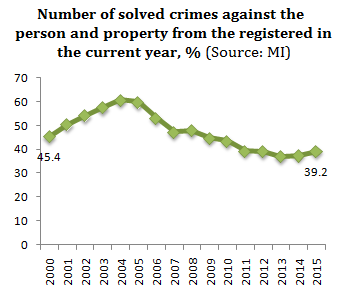 This significant decline in the number of solved crimes can be explained with the lack of reform in the Ministry of Interior (MI) and mainly the fact that its huge budget is being spent primarily for salaries and maintenance and not for capital investment. Additional reasons are the sluggishness and the anachronistic characteristics of the system, the possible existence of corruption and unregulated practices between the MI and the judiciary system.
This significant decline in the number of solved crimes can be explained with the lack of reform in the Ministry of Interior (MI) and mainly the fact that its huge budget is being spent primarily for salaries and maintenance and not for capital investment. Additional reasons are the sluggishness and the anachronistic characteristics of the system, the possible existence of corruption and unregulated practices between the MI and the judiciary system.